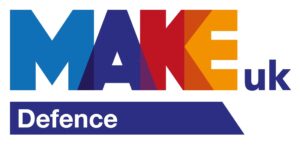Doing Business in Togolese
Business and Economic Overview
Located on Africa’s west coast, Togo is bordered by Ghana, Benin, and Burkina Faso and is home to approximately 8.5 million people.
Togo’s main source of income is agriculture, which accounts for about 40% of the country’s GDP and employs over half of the population. The agricultural sector includes the production of crops like coffee, cocoa, cotton, yams, cassava, corn, beans, rice, and livestock such as fish.
Togo has other industries, including phosphate mining, textiles, handicrafts, and beverages.
Poverty rate is significantly higher in rural areas (58.8%) compared to urban areas (26.5%). This is largely due to concentrated economic growth in the modern sectors and limited access to quality services. Poverty is higher in female-headed households (45.7%) than in male-headed households (45.2%). Women remain more vulnerable, as they have less access to economic opportunities, education, health, and other basic socioeconomic facilities.
Despite enduring shocks since the COVID-19 pandemic, Togo’s economy has shown resilience, with growth averaging 6.1% between 2021 and 2023. However, high inflation and disparities in economic opportunities between rural and urban areas have continued to hinder progress in reducing poverty and inequality. The government has now embarked on a fiscal consolidation strategy to bring the deficit back to 3% of GDP by 2025, while simultaneously pursuing structural reforms to boost private investment and job creation, embracing climate-smart agricultural practices.
Growth is expected to be estimated at 5.3% in 2024, reflecting fiscal consolidation efforts, weak global demand, and regional uncertainties. The fiscal deficit will decline to 6.1% of GDP in 2024 driven by cuts in public expenditures, particularly capital spending, as well as revenue mobilisation efforts.
On the supply side, while industrial activity has shown signs of deceleration owing to slowing external demand, a robust agricultural season and sustained services sector activity have helped support activity.
Outlook and Risks
Growth is expected to strengthen gradually, reaching 5.4% in 2025 and 5.8% in 2026. This modest acceleration will be supported by ongoing and planned private investment projects and a recovery in consumer spending as inflationary pressures continue to taper down. As the global economy regains some strength in 2025, exports should provide an additional boost while public investment is expected to pick up again in 2026. The poverty rate should gradually decline to 23.5% in 2026 supported by rising GDP per capita and easing inflation.
The main risks to the economic outlook are a potential escalation of terrorist violence in parts of the country, lower agricultural yields, and volatility in world phosphate prices. In addition, economic activities are likely to be hampered as the new constitution goes into effect.
References
https://www.worldbank.org/en/country/togo/overview
https://www.coface.com/news-economy-and-insights/business-risk-dashboard/country-risk-files/togo
Need advice?
If you’d like further information, or to discuss working with us, you can get in touch via our Contact Us page or making an enquiry below.
Drop us a message
To learn more about our legal services kindly reach out by completing the form on the right.
Alternatively, you can contact our office at +44 (0) 20 3875 7422 or leave us a message.
Our team of experts are looking forward to assisting you with your legal needs.
Need advice?
Contact us to discuss your requirements and how we can help






